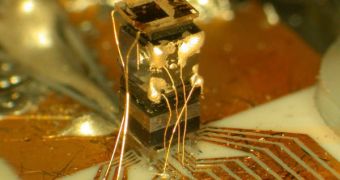Researchers have been striving to make the dimension of regular atomic clocks way smaller than they are now. The plan is to reduce their sizes from that of a fridge to one that would fit onto a chip. Also, in an interesting turn of events, cesium may become obsolete in its role of the best time-keeping atom, and may be replaced by aluminum, which will apparently become the new standard for measuring seconds, the basic unit of time keeping.
University of Nevada in Reno (UNR) scientists have just recently come up with a brilliant idea, that could change the way in which we build atomic clocks completely. At this point, the fridge-sized devices are composed of a vacuum chamber, a magnetic field and a microwave excitatory field, which make cesium atoms vibrate, and give off certain readings, that are then measured and transformed into seconds. Currently, a second equals 9,192,631,770 cycles of microwave radiation on cesium atoms.
But experts Andrei Derevianko and Kyle Beloy believe that the solution to building microscale atomic clocks lies not with the refining of the current construction method, but rather with the development of a completely new one. They suggest that lasers could be used to keep the atoms in place, instead of the bulky magnetic fields and temperature controllers that are now needed. Because the pressure chamber inside a regular clock is about a cubic meter across, it's very difficult to ensure uniform conditions along all of its surfaces.
The two suggest that lasers, working on a specific frequency, have the ability to literally trap the atoms in place, be they aluminum or cesium. This technique has the potential to allow scientists to drastically reduce the sizes of this type of clocks, and also to ensure that they work with less potential for errors. By finding the correct wavelength on which the lasers should operate in order to yield the optimum results, the UNR team calculated that one second is equivalent to 1506 million cycles of microwaves for aluminum-27, and 2678 million cycles for gallium-69, the other element that showed promises in tests, to replace cesium.

 14 DAY TRIAL //
14 DAY TRIAL //